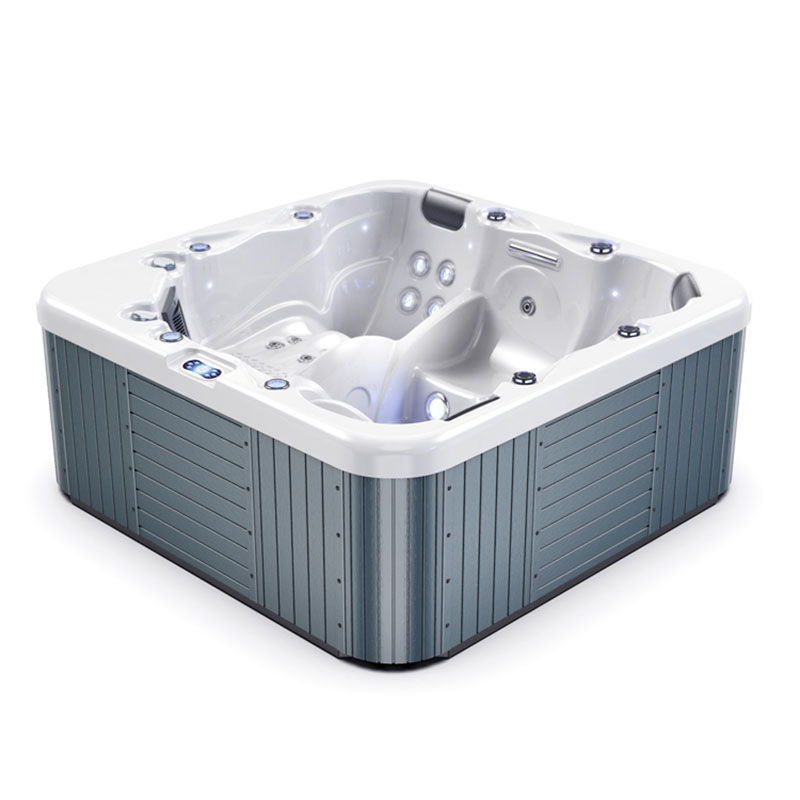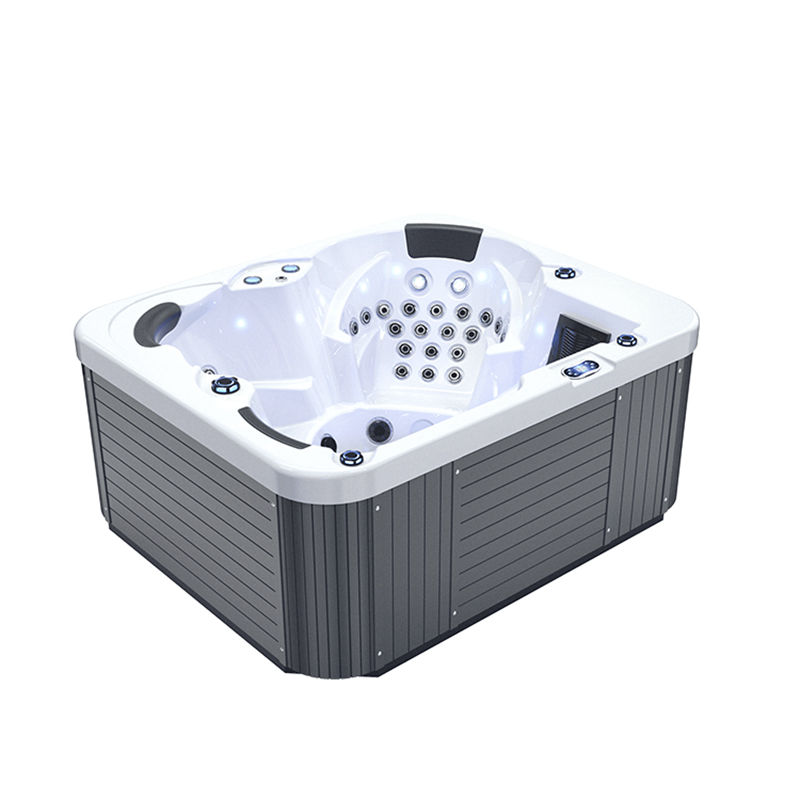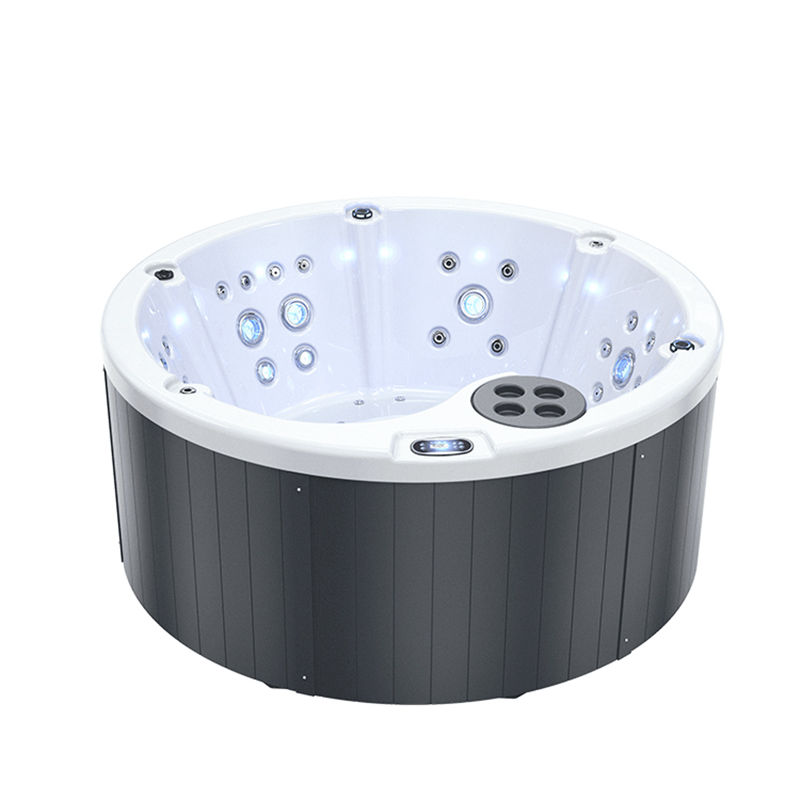In modern home entertainment and fitness facilities, swim spas and hot bathtubs are both popular choices. Both can provide a relaxing, stress-relieving experience and promote physical health to a certain extent. However, there are significant differences between the two in design, function and user experience. Therefore, many people will have a question: Can a swim spa completely replace the function of a hot bathtub? If I own a swim spa, do I need to install a hot bathtub separately?
This article will start from the main features of swim spas and hot bathtubs, explore the similarities and differences between the two, analyze whether a swim spa can be used as a hot bathtub, and help consumers better understand their actual application scenarios.
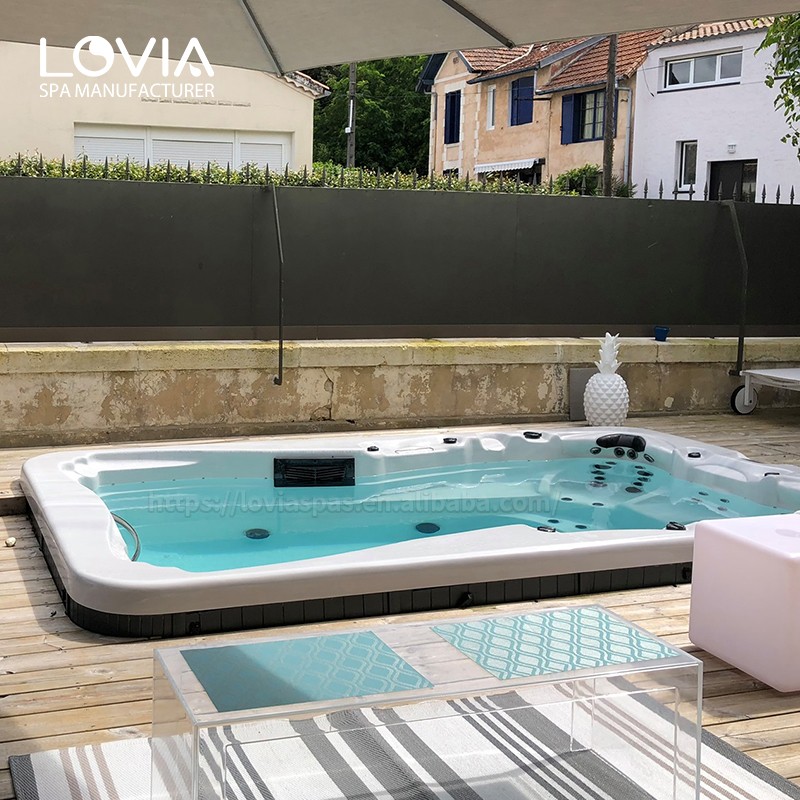
What are swim spas and hot bathtubs?
Before discussing whether a swim spa can be used as a hot bathtub, we first need to clarify the definitions and main functions of the two.
What is Swim spa
A swim spa is a device that combines the functions of a swimming pool and a hydrotherapy pool. It is usually smaller than a traditional swimming pool, but has a water current countermeasure system that allows users to perform swimming training in a limited space. In addition, swim spas also have hydromassage functions, usually equipped with multiple water jets that can perform hydromassage in the water. The design of swim spas is usually biased towards fitness and rehabilitation purposes, suitable for people who want to do swimming training at home and enjoy hydromassage.
The temperature of swim spas can usually be adjusted, suitable for fitness activities in warmer water. However, its main purpose is to provide a continuous water flow to simulate the swimming experience of open water. Users can keep "swimming" in the swim spa without reaching the edge of the pool.
What is Hot bathtub
The hot bathtub is mainly a device for relaxation and enjoyment. The original intention is to soothe muscles and relieve stress through warm water and hydromassage. The water temperature of hot bathtubs is usually higher than that of swim spas, reaching 38℃-40℃, which makes it an ideal place to relax. Hot bathtubs are usually equipped with powerful water jets that can focus on specific parts of the human body, such as the back, legs and shoulders for massage.
The design of hot bathtubs is mainly based on comfort. Its internal space is usually limited, accommodating at most a few people at the same time, providing a static hydrotherapy experience suitable for long soaking.
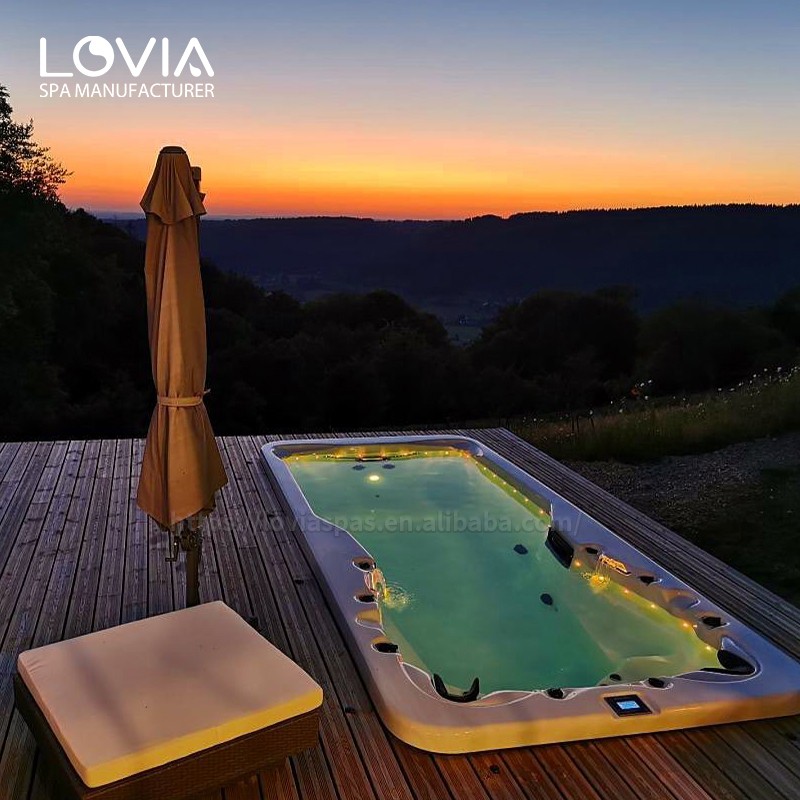
What are the main differences between a swim spa and a hot bathtub?
To understand whether a swim spa can be used as a hot bathtub, we first need to understand the main differences between the two. Although the two have some overlap in terms of function, such as both providing hydrotherapy massage functions, there are significant differences in terms of purpose of use, design, temperature control, etc.
Swim Spa Vs. Hot Bathtub: Differences in design and purpose
Swim spas are designed mainly to meet fitness needs, especially swimming training and water sports. Swim spas are usually larger inside and equipped with a strong water flow system, allowing users to swim against the water flow in a small space. In addition, it also has a certain massage function to help users relax their muscles after exercise.
Hot bathtubs are designed entirely for relaxation and enjoyment. They are usually more compact, with a smaller interior space, and the water jets are mainly focused on massage functions, rather than water flow systems for swimming. Hot bathtubs have higher water temperature settings, which can provide users with a deep hot water therapeutic effect.
Swim Spa Vs. Hot Bathtub: Differences in temperature control
Swim spas have a relatively wide temperature control range and can adjust the water temperature as needed. When swimming or other high-intensity water sports, the water temperature is usually lowered to around 28℃-30℃ to avoid overheating the body. Although the temperature of a swim spa can be adjusted to a higher temperature (usually up to 35℃-38℃), it is mainly designed for exercise and light hydrotherapy at a relatively mild water temperature.
In contrast, the temperature control of a hot bathtub focuses on high temperature, and the water temperature is generally maintained between 38℃-40℃. This high temperature can effectively promote blood circulation, help users relax muscles, reduce stress, and enhance human metabolism. Therefore, the water temperature setting of a hot bathtub is significantly higher than that of a swim spa, and it is designed for long-term soaking.
Swim Spa Vs. Hot Bathtub: Space and comfort
The interior space of a swim spa is larger, mainly for swimming and other water sports, so it is usually deeper and longer than a hot bathtub. Due to the need to install a water flow countermeasure system, the structure of a swim spa is more complex, and users usually need a certain amount of space to exercise. In terms of massage function, although the jet device of a swim spa can provide hydrotherapy effects, its design is usually not particularly focused on specific parts of the human body, and the massage intensity and precision may not be as good as a hot bathtub.
The hot bathtub pays more attention to comfort and is designed to provide users with a very comfortable and relaxing experience. Its water jets are usually specifically targeted at specific areas of the human body, such as the back, neck, and waist, to provide a deep massage. In contrast, the space of a hot bathtub is relatively compact, usually only for one or a few people at the same time, and the interior design is designed to put the user in a completely relaxed posture.
Swim Spa Vs. Hot Bathtub: Operation cost and maintenance
Swim spas have relatively high operating costs due to their many functions and large size. Especially when using strong water flow for swimming training, the power consumption is relatively large. The design of hot bathtubs is relatively simple, and the operating cost is usually lower than that of swim spas.
In terms of maintenance, swim spas need to handle larger water volumes and more complex systems, so the maintenance work is relatively cumbersome, and filters need to be cleaned regularly, water quality needs to be adjusted, etc. The water volume of hot bathtubs is smaller, and maintenance is relatively simple, but disinfectants still need to be added regularly and water quality needs to be kept clean.
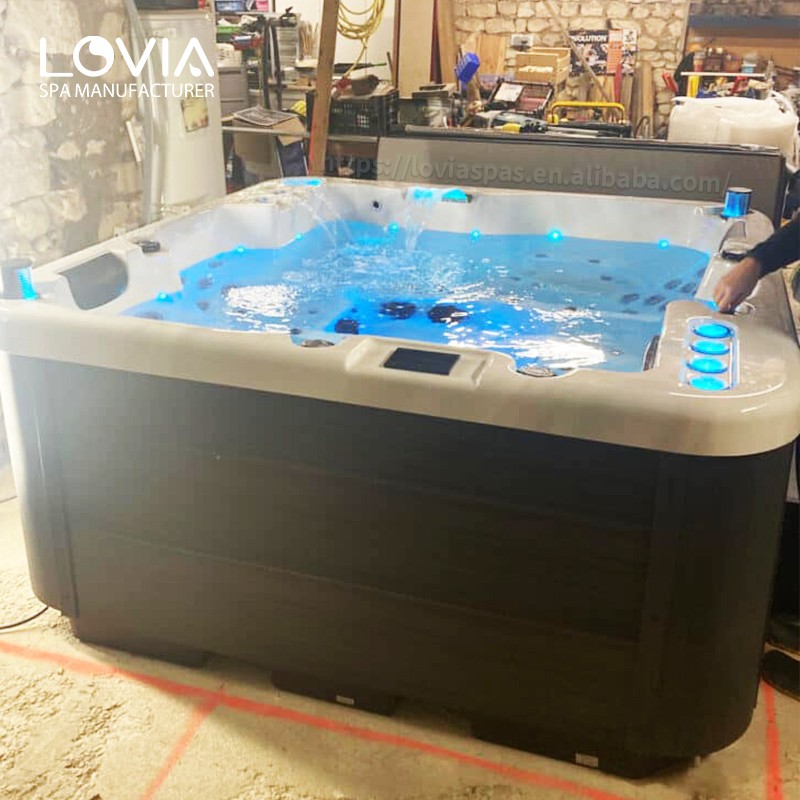
Can swim spas be used as hot bathtubs?
Although swim spas and hot bathtubs have different design purposes and functions, technically, swim spas can indeed partially replace the functions of hot bathtubs. However, this replacement has certain limitations.
Limitations of temperature regulation
Although the water temperature of a swim spa can be raised to a level close to that of a hot bathtub, since it is designed more for exercise, maintaining high temperatures for a long time may affect the life of the equipment. Most swim spas are not designed with the need to maintain high temperatures for a long time, so although high-temperature hydrotherapy can be used for a short period of time, using a swim spa as a hot bathtub for a long time may cause excessive wear and tear on the equipment.
Differences in comfort
The swim spa is designed more for exercise than for long-term comfortable soaking. Although it also has massage functions, its massage intensity and comfort may not be comparable to that of a hot bathtub. If the main purpose is to relax and relieve stress, the performance of a swim spa in this regard may not be as good as that of a specially designed hot bathtub.
Different application scenarios
The swim spa is suitable for people who want to exercise at home and enjoy some hydrotherapy functions, while the hot bathtub is suitable for people who want to relax in hot water and have a deep massage. If your needs are more inclined towards fitness and light hydrotherapy, a swim spa is a very suitable choice; but if you mainly want to enjoy the relaxing experience of hot hydrotherapy, a hot bathtub may be a more ideal device.
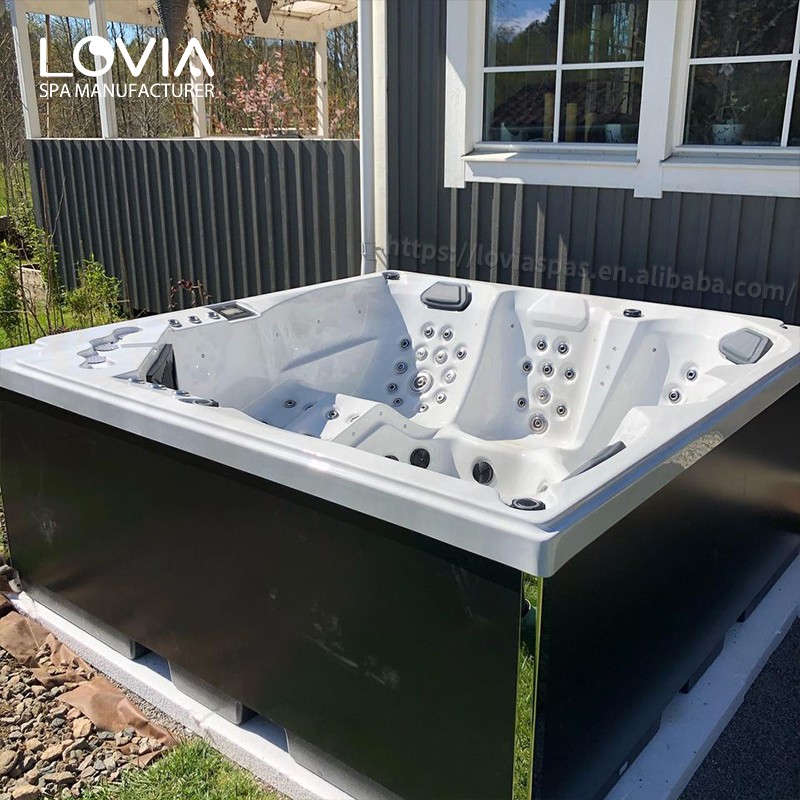
How to choose the right equipment?
Ultimately, whether a swim spa is a good alternative to a hot bathtub depends on your needs and budget. If you want to keep fit at home and need to relax occasionally, a swim spa may be a flexible option. It can provide both swimming training and relaxation effects by adjusting the water temperature.
However, if you are looking for a pure hot bath experience and want deep relaxation and massage in hot water, a hot bathtub can better meet this need. Designed to provide a comfortable high temperature environment, a hot bathtub can increase the water temperature in a short period of time and help relax the whole body through precise hydromassage.
Guangzhou HuanTong Industrial – Your one-stop spa supplier. Since 1989, we have been providing high-quality outdoor spas, including acrylic spas, wooden hot tubs, and swim spas. Our products are designed to meet the highest standards and are CE, ETL, and ISO9001 certified for quality and safety. We offer competitive pricing and bulk purchasing options, making it easy for businesses to purchase high-quality wellness products at the best prices.


